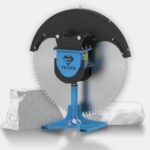Attention to detail is vital in enhancing vehicle performance and reliability. By understanding the functions of often overlooked components like the transmission cooler and exhaust pipe clamp, you can empower yourself with the knowledge to achieve optimal performance. In this comprehensive guide, we’ll explore these components’ significance, functions, importance, and how they contribute to maximizing vehicle performance and longevity.
Understanding the Role of a Transmission Cooler
Maintaining Optimal Transmission Temperatures
A transmission cooler is essential in any vehicle equipped with an automatic transmission. Its primary function is dissipating excess heat generated during the transmission’s operation, helping maintain optimal operating temperatures. By preventing the transmission fluid from overheating, a transmission cooler helps preserve the integrity of the transmission components, such as seals, clutches, and torque converters, ultimately extending the transmission’s lifespan.
Improving Transmission Performance and Efficiency
A transmission cooler can prevent overheating and improve transmission performance and efficiency. By ensuring that the transmission fluid remains at the correct operating temperature, a transmission cooler helps maintain consistent viscosity and lubrication properties. This, in turn, promotes smoother gear shifts, reduced wear and tear on internal components, and improved fuel efficiency.
Exploring the Importance of an Exhaust Pipe Clamp
Securing Exhaust Components
An exhaust pipe clamp is critical in securing various components, such as pipes, mufflers, and catalytic converters, in place. It helps create a tight seal between adjoining exhaust components, preventing leaks and ensuring exhaust gases are correctly routed through the exhaust system. Without secure clamping, exhaust components may become loose or misaligned, leading to rattling noises, leaks, and potential performance issues.
Preventing Exhaust System Damage
In addition to securing exhaust components, an exhaust pipe clamp helps prevent damage to the exhaust system caused by vibration, movement, and thermal expansion. A properly installed exhaust pipe clamp minimizes stress and fatigue on exhaust pipes and hangers, securely holding exhaust components in place and reducing the risk of cracks, fractures, and premature failure. This helps maintain the integrity of the exhaust system and ensures optimal performance and efficiency.
Maximizing Performance with Quality Components
Choosing the Right Transmission Cooler
When selecting a more excellent transmission for your vehicle, it’s essential to choose one that is appropriately sized and rated for your vehicle’s towing capacity and operating conditions. Transmission coolers come in various types, including air-cooled, liquid-cooled, and combination coolers. Each type offers unique benefits and performance characteristics. For example, air-cooled coolers are more affordable and easier to install, while liquid-cooled coolers provide superior cooling performance. Combination coolers, on the other hand, offer a balance between the two. Additionally, consider factors such as ease of installation, durability, and manufacturer reputation when choosing a transmission cooler for your vehicle.
Selecting High-Quality Exhaust Pipe Clamps
Similarly, when it comes to exhaust pipe clamps, your role in selecting quality is paramount. Opt for clamps made from durable materials such as stainless or high-grade steel, which offer superior strength, corrosion resistance, and longevity. Also, choose clamps with a robust design and secure fastening mechanisms, ensuring a tight and reliable seal between exhaust components. Your investment in high-quality exhaust pipe clamps will help to ensure the long-term performance and reliability of your vehicle’s exhaust system.
Installation and Maintenance Tips
Proper Installation Procedures
Whether installing a transmission cooler or exhaust pipe clamp, rest assured that proper installation procedures are straightforward and crucial to ensuring optimal performance and longevity. Follow the manufacturer’s instructions carefully, and use the recommended tools and techniques to install the components correctly. Ensure that all connections are tight and secure, and double-check for any signs of leaks or loose fittings before putting the vehicle back into service.
Regular Inspection and Maintenance
Once installed, regular inspection and maintenance of the transmission cooler and exhaust pipe clamp are essential to ensure continued performance and reliability. Periodically check for signs of damage, corrosion, or wear on the transmission cooler and exhaust clamps, and replace any worn or damaged components as needed. Additionally, transmission fluid temperatures and levels should be monitored regularly, and any abnormalities should be addressed promptly to prevent potential damage to the transmission.
Conclusion
In conclusion, a transmission cooler and exhaust pipe clamp may seem like minor components in the grand scheme of vehicle performance, but their importance cannot be overstated. Without a transmission cooler, the transmission fluid can overheat, leading to premature wear and tear on the transmission components and potentially causing the transmission to fail. Similarly, without an exhaust pipe clamp, exhaust components may become loose or misaligned, leading to rattling noises, leaks, and potential performance issues. By maintaining optimal transmission temperatures and securing exhaust components in place, these components play a crucial role in maximizing vehicle performance, reliability, and longevity. Whether towing heavy loads, navigating challenging terrain, or enjoying spirited driving, investing in quality transmission coolers and exhaust pipe clamps will help ensure your vehicle performs at its best for years to come.
Published by: Martin De Juan

















